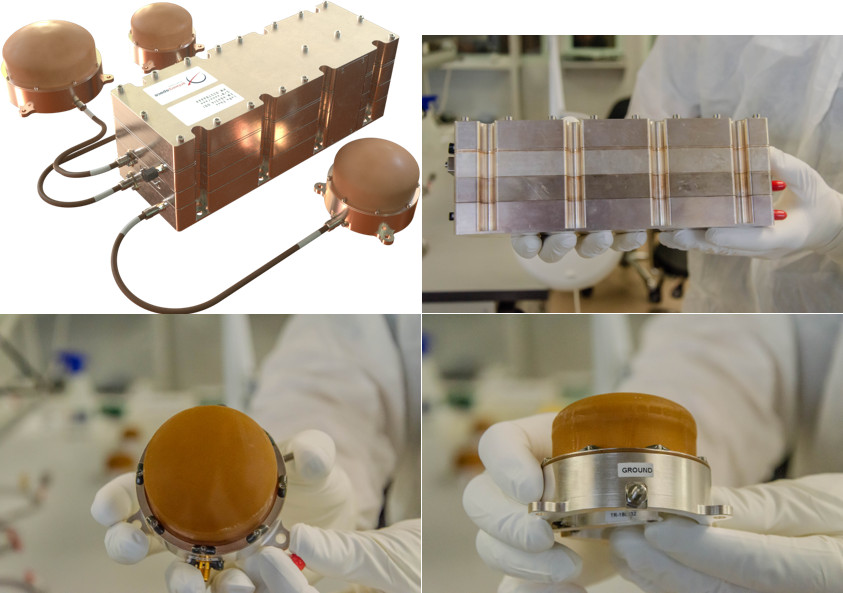- 1Royal Observatory of Belgium, Brussels, Belgium (sebastien.lemaistre@oma.be)
- 2Université catholique de Louvain, Louvain-la-Neuve, Belgium
- 3Institute of Astronomy, KU Leuven, Leuven, Belgium
Abstract
LaRa is a radio-science instrument that is ready to fly and was part of the science payload of the surface platform of the ExoMars mission. Now that ExoMars is suspended, LaRa will need to find another mission to go to the Martian system (or elsewhere in the inner Solar System). The LaRa instrument consists of an X-band transponder accompanied by a set of three antennas and three RF cables. This instrument is designed to measure with a couple of mHz of accuracy the Doppler shift induced by the variations in Mars rotation and orientation on a direct-to-Earth round-trip radio link. The main scientific objective of the LaRa experiment is to constrain the interior structure of Mars by precisely measuring the precession and nutations of the planet’s spin axis. LaRa’s measurements can also be used to refine the rotation model of Mars, including the polar motion, and infer constraints on the dynamic of its atmosphere.
The LaRa Instrument
The radio-science experiment enabled by LaRa provides two-way Doppler measurements corresponding to the line-of-sight velocity variations between the lander on Mars and the Earth tracking stations. Here is a description of the LaRa instrument (see detailed description of LaRa in Dehant et al. (2020)):
- LaRa consists in a transponder box and 3 antennas that are interconnected via 3 coaxial cables.
- The electronic transponder box dimensions are 25x8x8 cm
- This electronic box weights 1.5 kg while the total weight of LaRa is 2.15 kg.
- LaRa instrument uses at most 42 W (nominal power provided by the platform) to produce a radio frequency output power of about 5 W.
- LaRa works at X-band (channel 24) in a two-way mode (because not equipped with an ultra-stable-oscillator). LaRa’s bandwidth for the uplink is center on 7173.871143MHz, and that of the downlink is centered on 8428.580248 MHz.
- The coherent transponder can lock and maintain the lock for more than one hour on an uplink signal with a level ≥ -140 dBm
- LaRa uses one antenna (Rx) for receiving the signal transmitted by the Earth and two antennas (to ensure redundancy of the SSPA just prior to the transmitting antennas (Tx) in the transponder output chain) for retransmitting the signal back to Earth (see detailed description of LaRa's antennas in Karki et al. (2019)).
- The antennas radiate conical patterns with a maximum gain of about 5 dBi (antenna gain in dB w.r.t. an isotropic radiator) with a main lobe in the [30º, 55º] range of elevation and with a right-hand circular polarization.
- The frequency stability ensured by the coherent detector inside the electric transponder box is characterized by an Allan deviation lower than 10-13 at 60s integration time. The resulting thermal noise of LaRa is of the order of 10-2 mm/s at 60-s for LaRa.
- The accuracy of LaRa’s data is expected to be better than 2.8mHz at 60-s (i.e. <0.05mm/s@60s)
- The LaRa instrument has been designed to operate over at least one Martian year (687 Earth days)
- LaRa Technological Readiness Level is TRL 9
- LaRa Flight model is currently installed on the Russian surface platform located in TAS-I, but LaRa will certainly be soon disassembled from the platform and repatriated to Belgium, where it will be stored and awaiting a new host.

Scientific objectives of LaRa
The main objectives of LaRa are (see details in Dehant et al. (2020)):
- Help positioning precisely and fast the lander, right after landing on the planet (see detailed description of the method in Le Maistre 2016)
- Measure variations in rotation and orientation of the planet, which gives information about deep interior and atmosphere dynamics
- Could be used to probe planet’s atmosphere if any and interplanetary medium
Designed to establish a two-way radio link between Mars and the Earth, LaRa would be perfectly suitable for missions landing on Phobos, Deimos or for any mission that would visit a body of the inner Solar System. Indeed, if 70m-dish deep space stations are always available and used to track LaRa, one could in theory use LaRa to explore asteroids of the main belt for instance.
Acknowledgements
This work was financially supported by the Belgian PRODEX program managed by the European Space Agency in collaboration with the Belgian Federal Science Policy Office.
References
[1] V. Dehant, S. Le Maistre, R.-M. Baland, Ö. Karatekin, M.-J. Péters, A. Rivoldini, T. van Hoolst, M. Yseboodt, M. Mitrovic, the LaRa team, The radioscience LaRa instrument onboard ExoMars 2020 to investigate the rotation and interior of Mars. Planetary and Space Science, 180, 104776 (2020).
[2] Karki, S., Sabbadini, M., Alkhalifeh, K., Craeye, C., 2019. Metallic monopole parasitic antenna with circularly polarized conical patterns. IEEE Trans. Antennas Propag. 67 (8), 5243–5252.
[3] Le Maistre S., InSight coordinates determination from direct-to-Earth radio-tracking and Mars topography model. Planetary and Space Science, 121, 1-9, 2016.
[4] S. Le Maistre, M.-J. Péters, J.-C. Marty, and V. Dehant. On the impact of the operational and technical characteristics of the LaRa experiment on the determination of Mars’ nutation. Planetary and Space Science, 180:104766, 2020.
How to cite: Le Maistre, S., Dehant, V., Baland, R.-M., Beuthe, M., Caldiero, A., Filice, V., Goli, M., Péters, M.-J., Steenput, B., Rivoldini, A., Ümit, E., Van Hoolst, T., and Yseboodt, M.: LaRa, an X-band coherent transponder ready to fly, Europlanet Science Congress 2022, Granada, Spain, 18–23 Sep 2022, EPSC2022-1169, https://doi.org/10.5194/epsc2022-1169, 2022.

